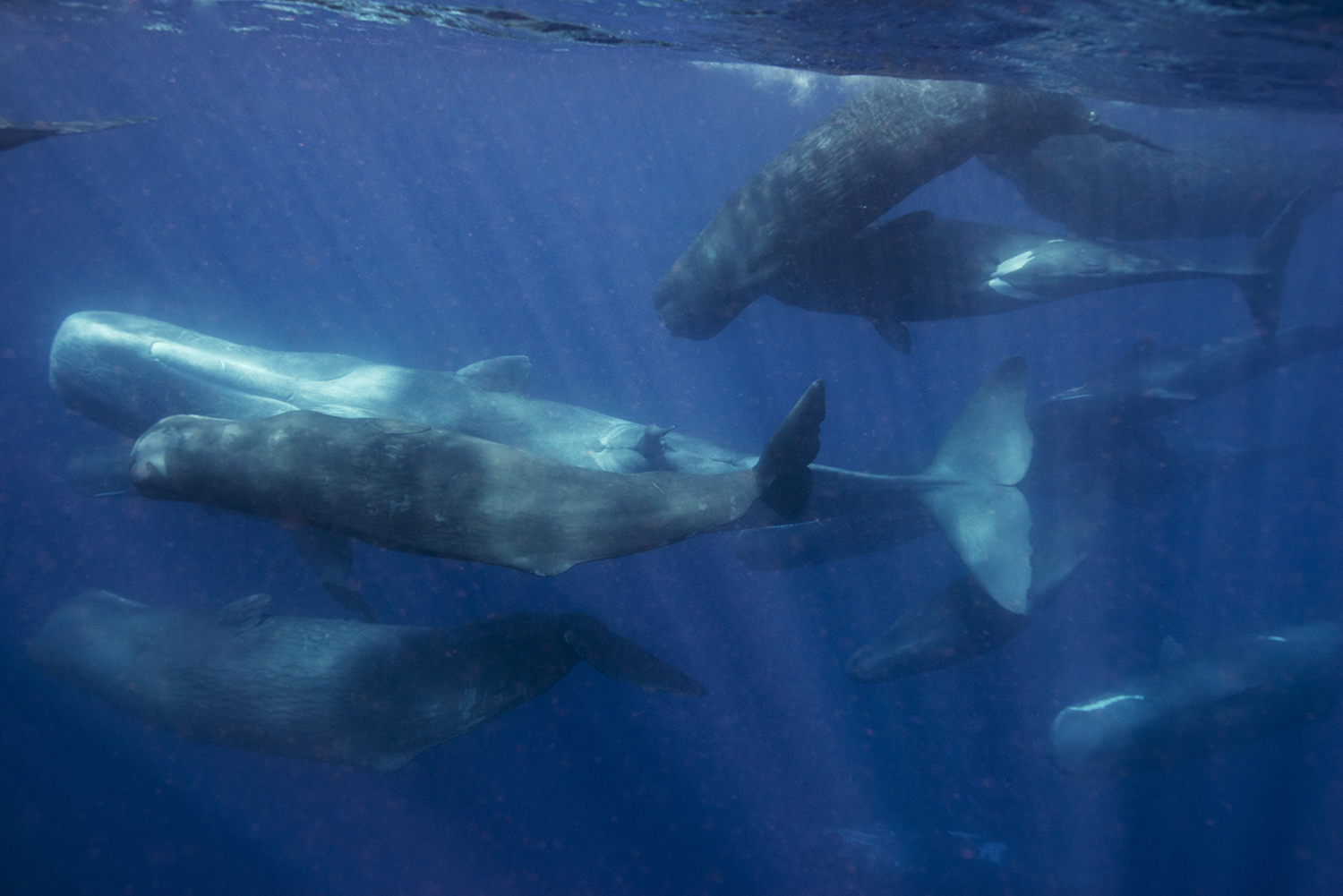Listening, Not Controlling: A Legal Path for Ethical AI in Animal Research
Bioneers | Published: May 8, 2025 JusticeNature, Culture and Spirit Article
The idea that nonhuman animals might possess rich, structured languages—complete with dialects, social codes, and meaning—was once, for modern society, the stuff of science fiction. But recent breakthroughs and research from the innovative team at Project CETI (the Cetacean Translation Initiative), who are using advanced AI and gentle robotics to study sperm whale communication, are making that possibility scientifically tangible. Sperm whales, long known for their complex social lives and patterned vocalizations, are not just making noise—they may be speaking a language we’re only just beginning to decode. And they’re not alone—similar tools and insights are now being applied to species like elephants, birds, and other animals whose vocalizations may hold linguistic complexity of their own.
But as science gains the tools to interpret animal language, a deeper question emerges: How do we ensure that listening leads to protection—not control or harm? As we enter this potent new era of potential interspecies understanding, the ethics of how we use this knowledge may be more important than the discovery itself.

In this companion article to Project CETI founder David Gruber’s piece on how AI is helping researchers decode whale sounds, César Rodríguez-Garavito, founding director of the More Than Human Life (MOTH) program at NYU, explores the legal and ethical implications of decoding animal communication. He shares how MOTH and CETI are working together to establish legal, philosophical, and community-centered guardrails—frameworks designed to ensure these technologies are used in service of the animals they study, not at their expense.
The following is an edited transcript from César’s panel conversation at Bioneers 2025.
Navigating the intersection of science, AI, and law can feel deeply charged—especially when working alongside the tech world, which often operates with a “move fast and break things” mentality. That mindset couldn’t be further from our approach.
That’s why, when David and I met at a conference in Los Angeles, we immediately recognized something important: we shared the how. Both of our collectives—the Cetacean Translation Initiative (Project CETI) and the More than Human Life (MOTH) program—are grounded in care, caution, and reciprocity. We’re aligned in believing that we should move only as fast as the science requires and never faster than the well-being of the animals, or the more-than-human world, allows.
Which brings us to the heart of our collaboration: exploring how this groundbreaking science with the potential to understand and even communicate with species like sperm whales, elephants, and others, might reshape the law.
It became clear that we’re standing at the threshold of an entirely new legal frontier. Questions that once belonged to the realm of science fiction are now becoming science.
As we began asking what the legal implications of these discoveries might be, it became clear that we’re standing at the threshold of an entirely new legal frontier. Questions that once belonged to the realm of science fiction are now becoming science. CETI has already shown that sperm whales exhibit complex communication patterns—possibly even language. And with that, many of the longstanding objections to animal rights start to fall apart.
Fifty years ago, people said animals weren’t sentient. That argument no longer holds. Then it was, “Okay, maybe they’re sentient, but they’re not intelligent.” But science has steadily overturned that, too. And now, the last holdout: “Well, they don’t have language.” And here we are.
Working with CETI is a joy. And honestly, I also love how it pushes back against mainstream assumptions, especially when people ask, “How far are you going to raise the bar?”
That’s exactly the question we’re exploring: What if it’s proven that cetaceans have the capacity for language? That’s not science fiction anymore—it’s current science. As we just heard from David, we’re already operating with evidence that strongly supports this idea. Even without future breakthroughs from CETI or other research teams, we now have a foundation for making powerful legal arguments using existing laws, both in the U.S. and internationally.
Of course, what excites many people the most is the possibility of understanding the content of these communications. What if we could truly interpret what whales are saying to each other? Depending on who you ask, some believe that this future is just a few years away.
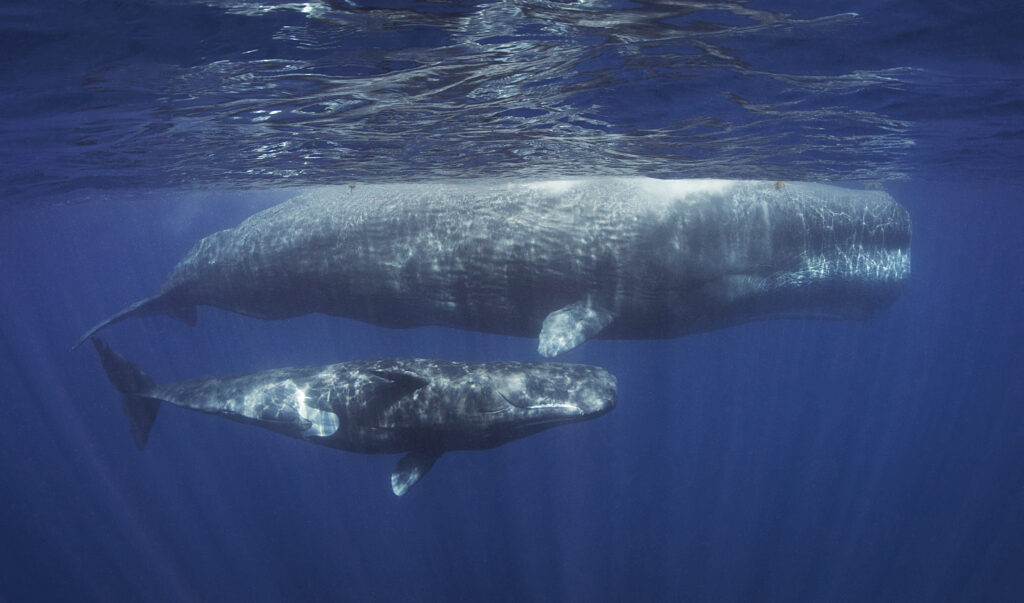
The legal implications of CETI’s research and that of similar collectives are split between two key fronts. The first is opportunity, and the opportunities here are absolutely unprecedented. But equally important are the risks. These emerging technologies hold real promise, but they also present serious concerns regarding the protection and well-being of the animals involved.
In most collaborations, the conversation centers almost entirely on the upside. People want to hear about what’s possible. When I speak at animal law conferences, for example, the interest is naturally focused on new tools for animal protection—and for good reason.
But in many legal circles, and certainly in much of the AI world, there’s a reluctance to engage with the risks. So in our work, we’re committed to giving equal weight to both: the opportunities and the necessary guardrails.
In our work, we’re committed to giving equal weight to both: the opportunities and the necessary guardrails.
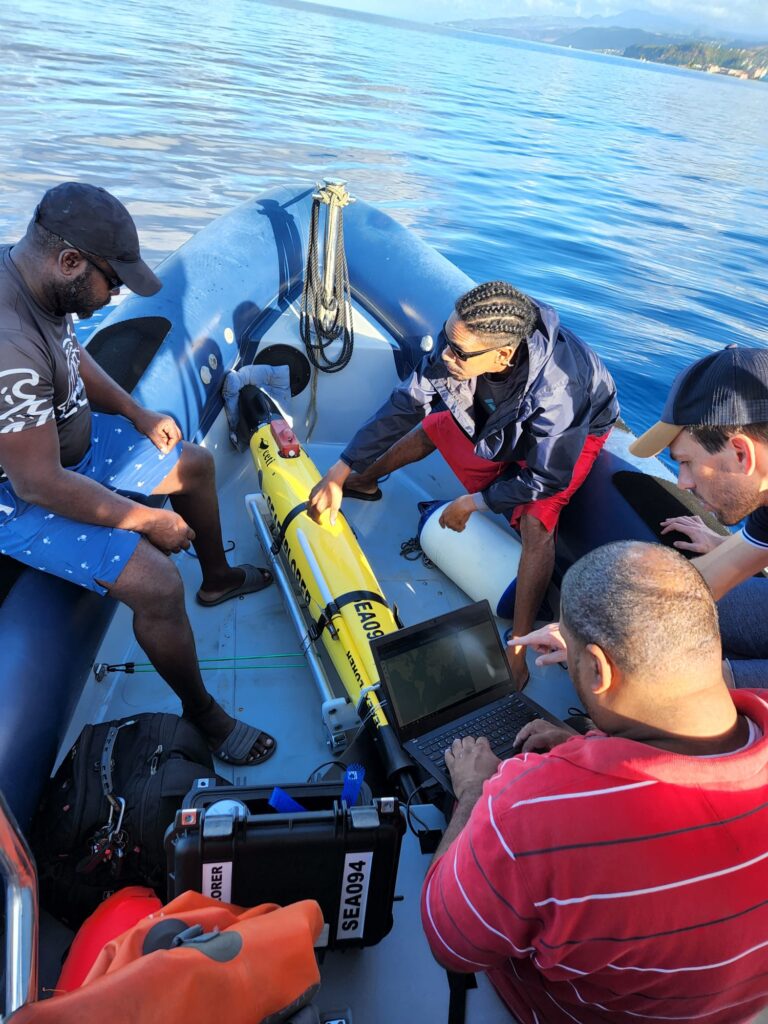
Starting with the good news—the opportunities—we’re already thinking ahead and taking concrete steps. One of the most exciting developments in our collaboration is the potential to pursue new animal rights litigation grounded in this emerging science.
We’re also looking to support parallel efforts happening around the world. Polynesia and New Zealand, for instance, are moving quickly to integrate new scientific insights into legislation. The data being generated by CETI and others could help strengthen the accuracy and depth of legal protections for sperm whales, other cetaceans, and a broad range of species.
Another area where this science has clear legal implications is in the realm of animal research. We’re advocating for stricter protocols—particularly for research involving sperm whales and other marine mammals—based on a growing understanding of their intelligence and communication.
And finally, there’s an important legal avenue that doesn’t require new laws or litigation at all: reinterpreting and applying existing legislation in more protective ways. I mentioned this briefly this morning, but let me expand on one example.
As you heard from David’s presentation, sperm whales depend on sound to survive. Their lives are shaped by communication. These are highly auditory animals—they rely far more on hearing than sight.
When we consider the scale of ship traffic, the expansion of deep-sea mining, and the continued extraction of offshore oil, we have to acknowledge the consequences: these activities generate massive noise pollution that masks and interrupts whale communication. Their clicks can no longer carry across the ocean. They can’t hear one another. And when whales can’t hear each other, they lose the ability to maintain their social bonds, to navigate, to survive.
To me—and to the human rights scholars on my team at NYU—this isn’t just an environmental issue. My background is in international human rights law, and much of my work has focused on identifying and addressing systemic violations of dignity and well-being, particularly for vulnerable communities. So when David first presented an early version of his research, I sat there listening, and what I heard was: This is torture. This is cruel, degrading treatment.
The idea that sentient beings are being acoustically assaulted—unable to communicate, navigate, or maintain social bonds because of human-generated noise—resonated deeply with legal frameworks we’ve long used to protect humans.
The idea that sentient beings are being acoustically assaulted—unable to communicate, navigate, or maintain social bonds because of human-generated noise—resonated deeply with legal frameworks we’ve long used to protect humans. And now, we’re asking: What would it mean to apply those same protections across species lines?
As it turned out, David and I both approached each other after that talk. I told him, “I think I have an idea for you,” and he replied, “I think I have some science for you.”
That moment sparked the foundation of our collaboration. We’re now working to make a legal case that this kind of acoustic disruption—this forced silencing of sentient beings—constitutes torture, cruel punishment, and inhumane treatment under international law.
All of this work depends on a deepening scientific understanding of the more-than-human world—specifically, the perceptual worlds of animals. As we come to better understand how animals perceive and navigate their environments, we become better equipped to articulate how human activity disrupts those experiences—and how such disruptions can amount to violations of their dignity and well-being.
But alongside the promise, there are serious risks and challenges.
One major concern is the potential for manipulation and exploitation. Imagine a scenario where tourism operators use playback devices to lure whales toward boats. Now extend that to other species, such as elephants, for example. The possibilities for misuse are vast. Poachers, traffickers, or others with harmful intentions could use insights from animal communication to control or manipulate behavior. Understanding the structure or content of animal communication could, in the wrong hands, become a tool for exploitation.
The second risk is the invasiveness of the research itself. CETI has taken great care to avoid disrupting sperm whales’ lives—avoiding blood draws, minimizing interference, respecting the natural rhythms of the pods. But not all researchers operate with the same level of caution. In the wrong context, this kind of observation could become something else entirely: a form of surveillance. A 24/7 intrusion into the lives of animals who never gave consent.
The third major concern is the potential for real physical, psychological, and communal harm to animals and ecosystems.
To address these risks, we’ve taken two key steps. First, my team at NYU examined a range of legal frameworks in animal law as well as in adjacent fields like human rights and child protection. We looked at guidance from the United Nations Committee on the Rights of the Child, as well as the U.N. Declaration on the human rights responsibilities of corporations, which is especially relevant given that many of the actors in this space are corporate entities.
We also reviewed existing protocols governing animal research at academic institutions. But here’s the thing: nothing currently exists that specifically regulates the use of machine learning and bioacoustics in the study and recording of animal communication.
That is a problem. Especially when you consider that the field of AI is already deeply underregulated and becoming more so by the day. In many ways, it’s still a free-for-all.
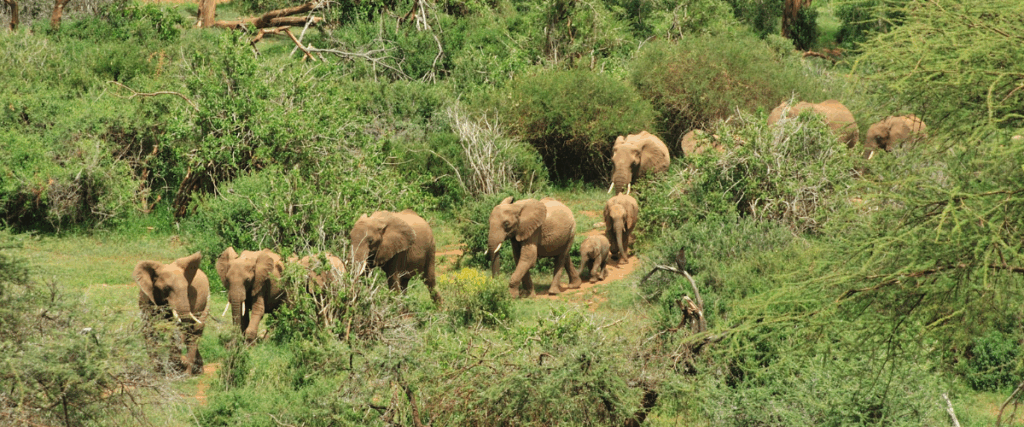
So we decided to create new guardrails. After a year of research, we’re preparing to publish a set of guiding principles developed in collaboration with other concerned scientists and legal scholars. We also co-hosted a workshop at NYU that brought together experts like Joyce Poole, a prominent elephant biologist and conservationist, and others who are actively grappling with the ethical and ecological impacts of this emerging research on the animals they study.
Let me give you just a small preview of the guardrails we’ve developed.
We have what we call a PEPP framework, which stands for Prepare, Engage, Prevent, and Protect. Each pillar contains three principles, for a total of 12 guiding standards for ethical research.
The Prepare principles focus on what scientific collectives and technologists must do before they begin their research. Here’s just one example: it may sound basic, but it’s critical—implement transparent and robust ethics and data governance protocols from the outset. One of the biggest unanswered questions is: What happens to all this data?
Too often, animal communication recordings are treated like any other data stream, as fodder for training large language models, with no safeguards around ownership, consent, or use. If we’ve already struggled to regulate the circulation of human data, imagine the risks of misusing data collected from non-human species.
The second pillar is Engage. This is essential and is something CETI has already dedicated significant time and care to. While other entities might see this kind of work as a distraction or a non-essential expense, CETI has made real investments in community collaboration. For example, all of the equipment used in the Dominica-based research is returned to the community once the studies are complete.
What MOTH adds to this engagement pillar is a commitment to connecting Western science with Indigenous knowledge systems. Many Indigenous nations—particularly across Polynesia, in Hawaiʻi, along the Pacific coasts of North and South America—have long traditions of meaningful interaction and communication with whales. We believe it’s essential to create space where CETI’s findings can be placed in conversation with these other ways of knowing, expanding our ethical and perceptual frameworks.
The third pillar, Prevent, might sound simple, but it’s foundational. Anyone working in environmental law will recognize this as the precautionary principle. I recently asked a large language model to explain it for a five-year-old, and it came back with: Better safe than sorry. Honestly, that’s a pretty good summary.
At its core, the principle says that if you’re uncertain about the potential impacts of your research—you abstain. That’s a sharp contrast to the prevailing logic in much of the tech world, where uncertainty often leads to forging ahead anyway. In this work, precaution must come first.
Finally, the boldest and most ambitious pillar of the framework is Protect. This is about recognizing that there will be times when the interests of non-human animals, such as sperm whales, come into direct conflict with human interests.
Sometimes those human interests include the goals of scientists themselves. For example: in some corners of the scientific community, there’s pressure to play back recorded whale sounds as a way to validate whether we’re truly understanding their communication. CETI has encountered peer reviewers requesting this. But they’ve refused because that kind of interaction could interfere with the whales’ natural behavior.
The boldest and most ambitious pillar of the framework is Protect. This is about recognizing that there will be times when the interests of non-human animals, such as sperm whales, come into direct conflict with human interests. Sometimes those human interests include the goals of scientists themselves.
We had a powerful conversation about this at CETI’s most recent meeting in Dominica, and I think we managed to reach consensus: It’s worth keeping this principle in place. That means prioritizing the interests of the whale even when they conflict with the interests of researchers who are under pressure to publish.
In crafting this principle, we took inspiration from international law on children’s rights, specifically, the concept of the best interest of the child. Now, let me be clear: We’re not infantilizing animals, nor are we animalizing children. I know this analogy gets pushback from both directions—some in the child rights world resist the comparison, and some in the animal rights world object to likening animals to children.
But the underlying point remains: When vulnerable beings are impacted by decisions made in research, law, or policy, their interests must take priority. In this context, that means placing the well-being of the animal—of the sperm whale—above other competing human interests.
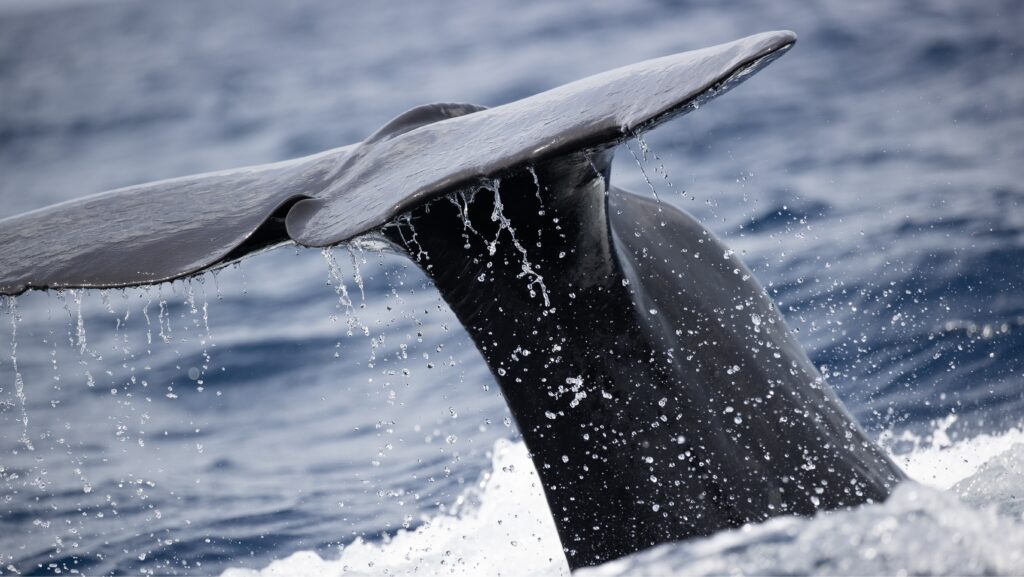
I’ll end by returning to the place where I feel most at home: using law and legal research as a tool for social change.
Before we look forward, it’s worth looking back. This isn’t the first time that listening to whales has changed the course of history.
In 1970, bio-acoustician Roger Payne released Songs of the Humpback Whale, a groundbreaking album that introduced the public to the haunting, elaborate vocalizations of humpback whales. It was truly historic. Many of you may know that the album became a surprising success. But more than that, it played a pivotal role in the movement to end commercial whaling. The science and the recordings sparked Save the Whales, a powerful global campaign that helped lead to the ban on commercial whaling. That was the early 1970s through the early 80s, which was a time of profound uncertainty in geopolitics and global conflict.
Sound familiar?
It’s one reason we believe we’re at another such juncture today. This science, the careful, ethical exploration of cetacean communication, has the power to once again inspire wonder. Wonder can lead to empathy. Empathy can lead to hope. And hope, if nurtured, can lead to action.
Carl Sagan closed his 1972 essay, “A Message from Earth,” with this line: “The cetacean holds an important lesson for us. The lesson is not about whales and dolphins—but about ourselves.”
Our hope is that this work, if approached with care, can do the same. That it can push science, law, and ethics toward a future where animal research is guided by protection and reciprocity—where wonder becomes action, in defense of the more-than-human world.
Want to dive into the science behind this legal and ethical frontier?
In his companion article, marine biologist and Project CETI founder David Gruber shares how AI and soft robotics are unlocking the language of sperm whales, potentially opening a new chapter in interspecies communication.We also invite you to watch Shane Gero, CETI’s lead whale researcher, explain why understanding sperm whale society is key to protecting their future—and what it means to treat their cultures with the same respect we expect for our own.
